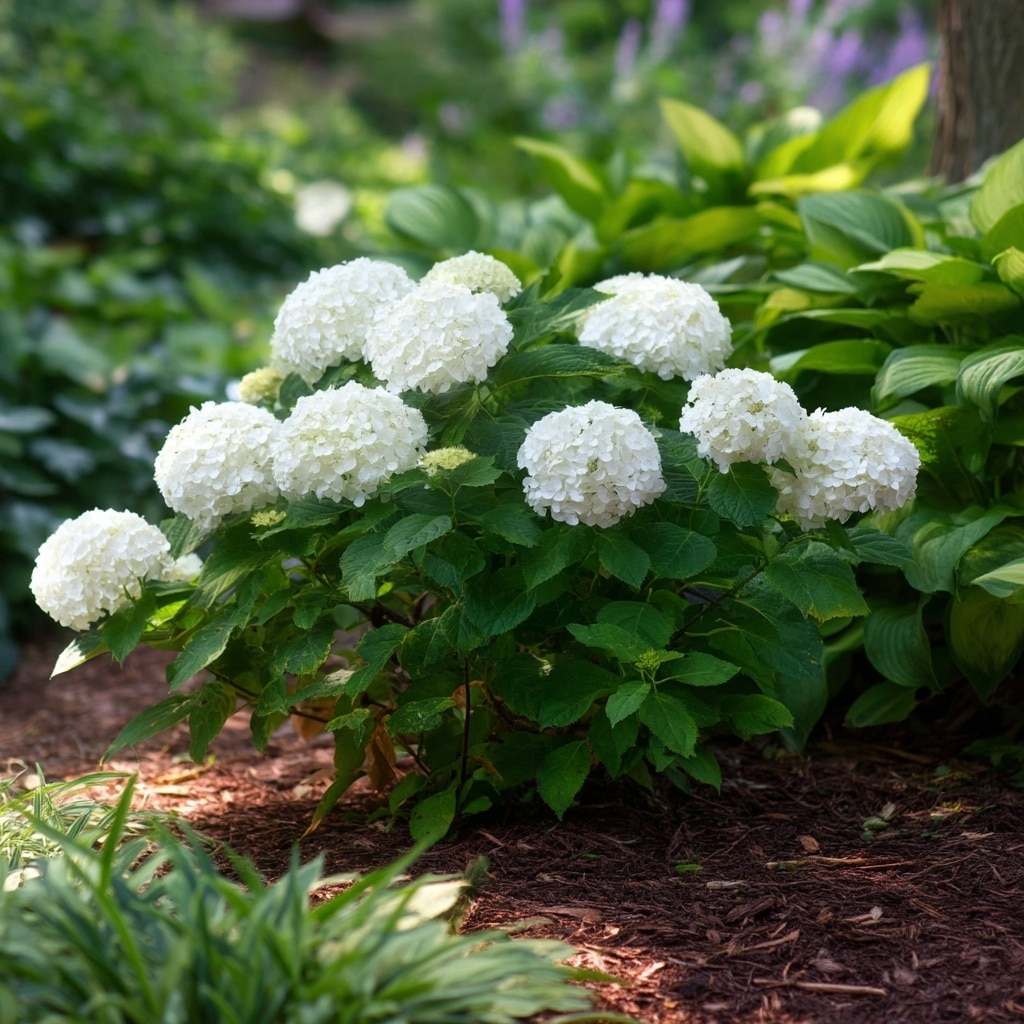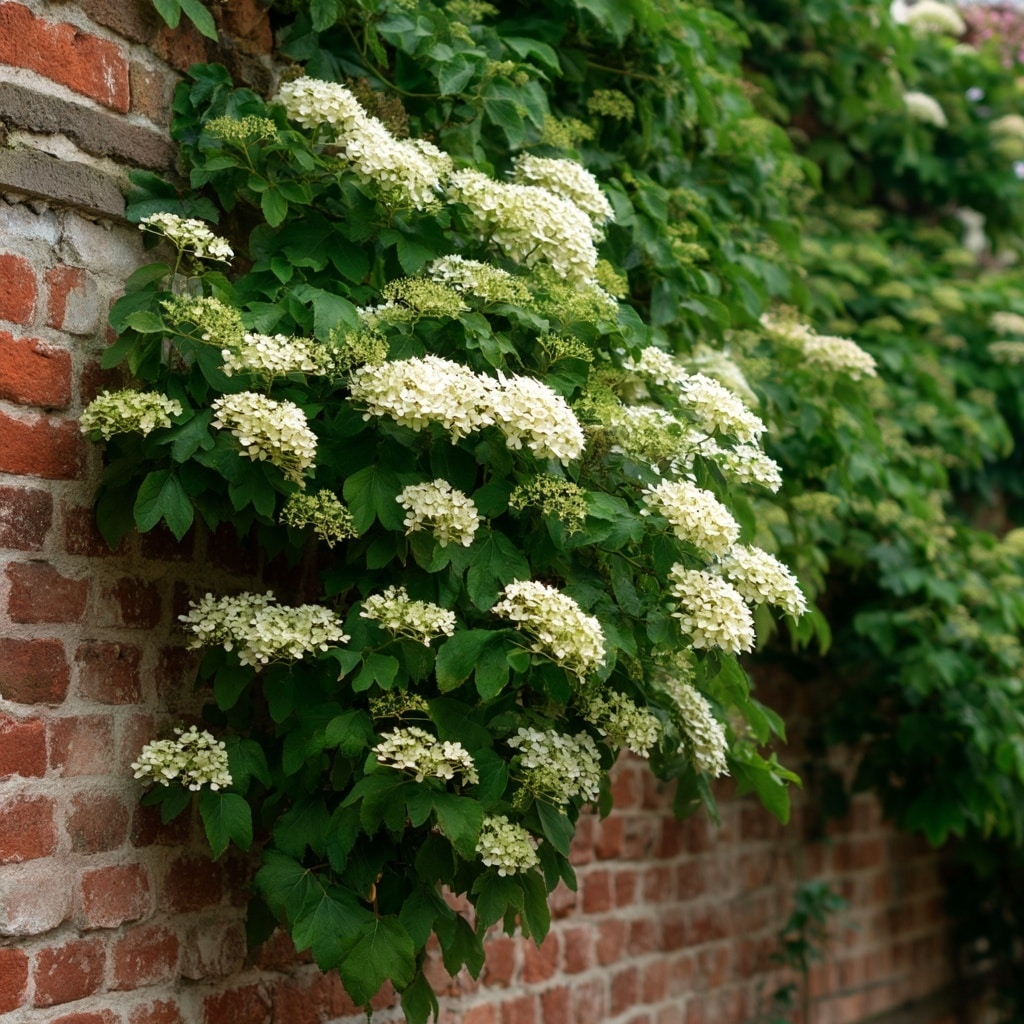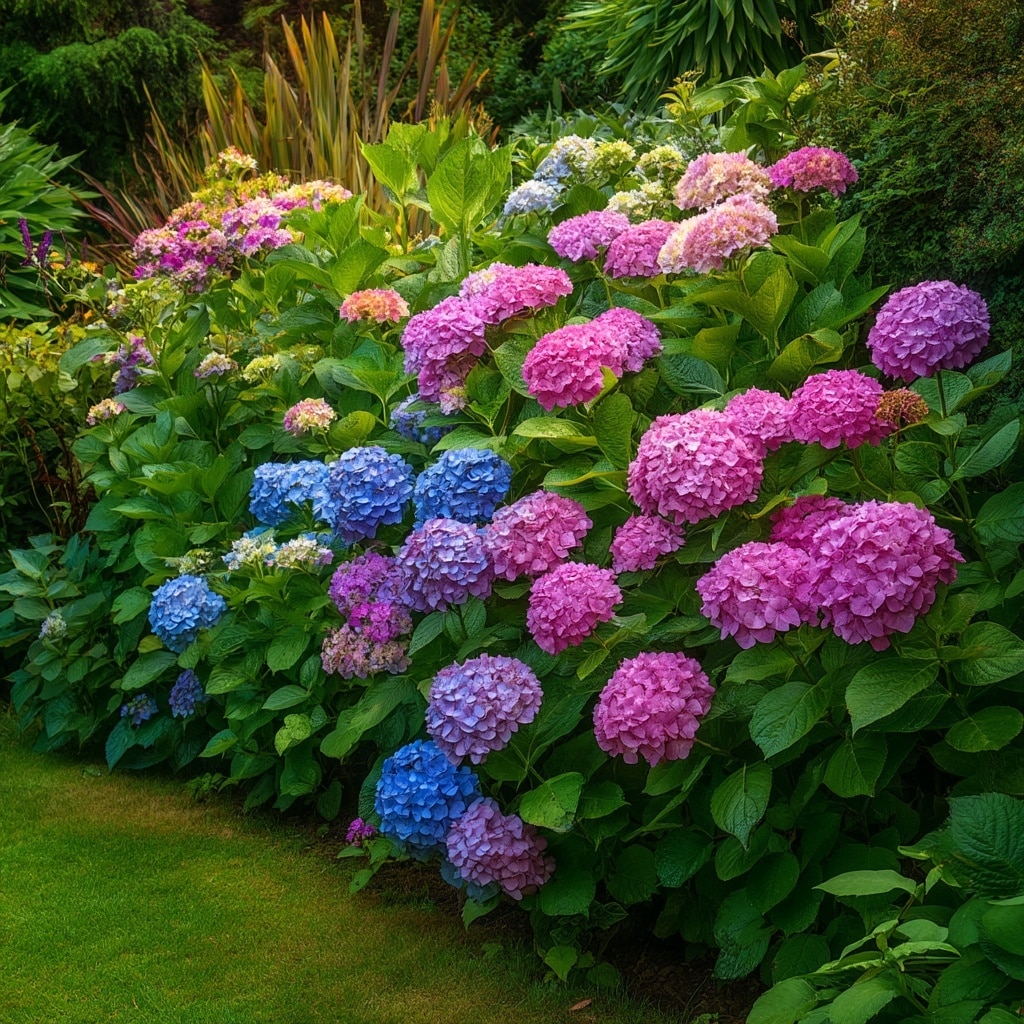Hydrangeas are one of the most captivating flowering shrubs you can add to your garden. With their lush blooms, wide variety of shapes and colors, and adaptability to different climates, hydrangeas bring a timeless charm to any landscape. Whether you’re looking to brighten a shady corner, create a focal point in a flower bed, or cover a trellis with cascading blossoms, there’s a hydrangea variety to match every need. Understanding the unique features and care requirements of each type ensures they not only survive—but truly flourish—in your outdoor space.
Table of Contents
1. Bigleaf Hydrangeas (Hydrangea macrophylla)
Bigleaf hydrangeas are among the most iconic varieties and a favorite for home gardeners. Native to Japan, these hydrangeas are known for their lush, show-stopping blooms and deep green foliage. They’re most often seen in two forms: mophead and lacecap, each offering a distinct look and garden appeal.
Mophead Hydrangeas
Mophead hydrangeas produce large, globe-like flower clusters that often steal the spotlight in summer gardens. Their blooms can shift between vibrant blue and soft pink depending on the soil’s pH level—acidic soil encourages blue, while alkaline soil leans toward pink.
- USDA Zones: 5–9
- Bloom Time: Early summer through fall
- Soil Requirements: Rich, well-drained soil; pH affects color
- Sunlight: Morning sun with afternoon shade preferred
- Care Tips: Keep soil consistently moist and mulch around the base to retain water. Prune only after blooming to avoid cutting off next season’s buds.
Garden Uses:
Plant mopheads as bold focal points in foundation beds or along shaded borders. Their full blooms also make stunning cut flowers for indoor arrangements.
Lacecap Hydrangeas
Lacecap hydrangeas offer a more delicate and intricate flower structure. Their flat flower heads feature a center of tiny, fertile blossoms surrounded by larger, sterile petals, giving them a unique, lacy appearance.
- USDA Zones: 5–9
- Bloom Time: Early summer through fall
- Soil Requirements: Moist, fertile, well-drained soil; pH affects bloom color
- Sunlight: Partial shade or filtered light is best
- Care Tips: Like mopheads, prune after blooms fade and maintain even soil moisture. Mulch helps regulate soil temperature and retain hydration.
Garden Uses:
Lacecaps are ideal for softening the edges of mixed borders or adding elegance to woodland-style gardens. Their textured blooms also blend well with ferns and hostas.
2. Mountain Hydrangeas (Hydrangea serrata)

If you love the look of bigleaf hydrangeas but live in a region with colder winters, mountain hydrangeas are a smart and stylish choice. These compact shrubs are native to the mountainous regions of Japan and are well-known for their resilience and charm. Though smaller in size, mountain hydrangeas offer the same seasonal color variation based on soil pH—blue in acidic soil, pink in alkaline.
Their smaller leaves and tighter growth habit make them more cold-hardy than their bigleaf cousins, without sacrificing the beauty that hydrangeas are known for.
- USDA Zones: 4–8
- Bloom Time: Early summer to fall
- Soil Requirements: Moist, well-draining, nutrient-rich soil; soil pH affects bloom color
- Sunlight: Partial shade is ideal, especially in hotter climates
- Care Tips: These hydrangeas require minimal pruning—just a light trim after blooming. Water regularly during dry spells and mulch to preserve soil moisture.
Garden Uses:
Mountain hydrangeas are perfect for small gardens, cottage borders, or even containers on patios and balconies. Their manageable size makes them easy to care for, and their blooms still deliver the lush appeal that hydrangeas are loved for.
3. Panicle Hydrangeas (Hydrangea paniculata)

Among all hydrangeas, panicle hydrangeas are the most sun-tolerant and cold-hardy, making them a go-to choice for gardeners in a wide range of climates. These robust shrubs produce impressive, cone-shaped flower clusters that can reach over a foot long. Blooms typically start off greenish-white and gradually transform into shades of pink or rose as the season progresses.
Panicle hydrangeas bloom on new wood, meaning they’re less sensitive to pruning mistakes and more reliable when it comes to producing flowers year after year.
- USDA Zones: 3–8
- Bloom Time: Mid-summer to fall
- Soil Requirements: Adaptable to many soils but prefers well-drained, moderately rich soil
- Sunlight: Full sun to partial shade
- Care Tips: Prune in late winter or early spring before new growth appears to shape the plant and encourage strong blooms. Water during dry spells, but they tolerate occasional drought once established.
Garden Uses:
Panicle hydrangeas are ideal for creating dramatic backdrops in garden beds or along fences. Their strong stems and long-lasting blooms also make them excellent for dried flower arrangements, adding beauty to indoor spaces well beyond the growing season.
4. Smooth Hydrangeas (Hydrangea arborescens)

Smooth hydrangeas are native to North America and are beloved for their large, round flower heads and reliable performance in a variety of garden conditions. One of the most popular cultivars, ‘Annabelle,’ produces massive white blooms that can span up to 12 inches across, lighting up shady spaces with their soft elegance.
Unlike other hydrangeas that bloom on old wood, smooth hydrangeas bloom on new growth, making them more forgiving when it comes to pruning and less vulnerable to late frosts.
- USDA Zones: 3–9
- Bloom Time: Late spring through fall
- Soil Requirements: Moist, fertile, well-drained soil
- Sunlight: Partial shade to full sun
- Care Tips: Cut back hard in late winter or early spring to encourage vigorous growth and bigger blooms. Mulch helps retain moisture and control weeds around the base.
Garden Uses:
Smooth hydrangeas are perfect for soft, natural hedges or filling in shaded garden borders. Their full, snowball-like blooms make a striking contrast against ferns, hostas, or other leafy perennials. They also work beautifully in cut flower arrangements, fresh or dried.
5. Oakleaf Hydrangeas (Hydrangea quercifolia)

For gardeners looking to add more than just flowers to their landscape, oakleaf hydrangeas offer stunning four-season interest. Named for their distinctive, lobed leaves that resemble those of an oak tree, these hydrangeas shine in every season—from their white-to-rose panicle blooms in summer to their deep red foliage in fall and peeling bark in winter.
Oakleaf hydrangeas are native to the southeastern United States and are well-adapted to woodland settings, where their texture and structure add depth to shaded areas.
- USDA Zones: 5–9
- Bloom Time: Early summer through fall
- Soil Requirements: Well-drained, slightly acidic soil
- Sunlight: Partial shade to full sun (with some protection from intense afternoon heat)
- Care Tips: Once established, they’re drought-tolerant. Prune sparingly—usually only to remove dead wood or shape lightly after flowering. Mulch in fall to protect roots in colder climates.
Garden Uses:
Oakleaf hydrangeas are excellent for naturalized or woodland gardens. Their coarse leaves contrast beautifully with fine-textured plants like grasses or ferns, while their upright blooms add vertical interest. They’re especially valuable in fall when their leaves turn shades of crimson, orange, and burgundy.
6. Climbing Hydrangeas (Hydrangea anomala subsp. petiolaris)

If you’re looking to add vertical interest to your garden, climbing hydrangeas are a standout solution. These vigorous vines can scale walls, fences, trellises, or arbors with ease, reaching heights of up to 50 feet when fully mature. In late spring to early summer, they burst into fragrant, flat-topped clusters of creamy white blooms that attract pollinators and soften hard surfaces.
Unlike many fast-growing vines, climbing hydrangeas are slow to establish—but once they get going, they reward gardeners with years of lush coverage and dependable flowering.
- USDA Zones: 4–8
- Bloom Time: Late spring to early summer
- Soil Requirements: Moist, well-drained, rich soil
- Sunlight: Partial shade is ideal, but they tolerate full sun in cooler climates
- Care Tips: Provide sturdy support such as stone walls, pergolas, or heavy-duty trellises. Prune after flowering to manage size and shape. Keep the soil consistently moist during establishment.
Garden Uses:
Climbing hydrangeas are ideal for softening large structures and adding a romantic feel to the garden. They’re especially beautiful cascading over stone or brick walls and provide an excellent alternative to traditional climbers like ivy or clematis.
Conclusion
Hydrangeas are truly one of the most versatile and rewarding plants you can add to your garden. Whether you’re drawn to the bold presence of mopheads, the delicate elegance of lacecaps, or the rustic beauty of oakleaf and climbing varieties, there’s a hydrangea that fits every space and style. By understanding the unique traits and care needs of each type, you can plant with confidence—and enjoy season after season of stunning blooms.
Want more helpful tips on garden design, shade-loving plants, or how to naturally adjust soil pH for hydrangea color changes? Check out other gardening articles on our site to continue growing your knowledge!




